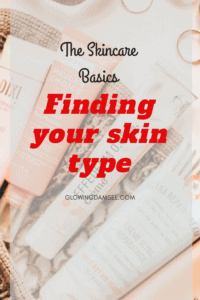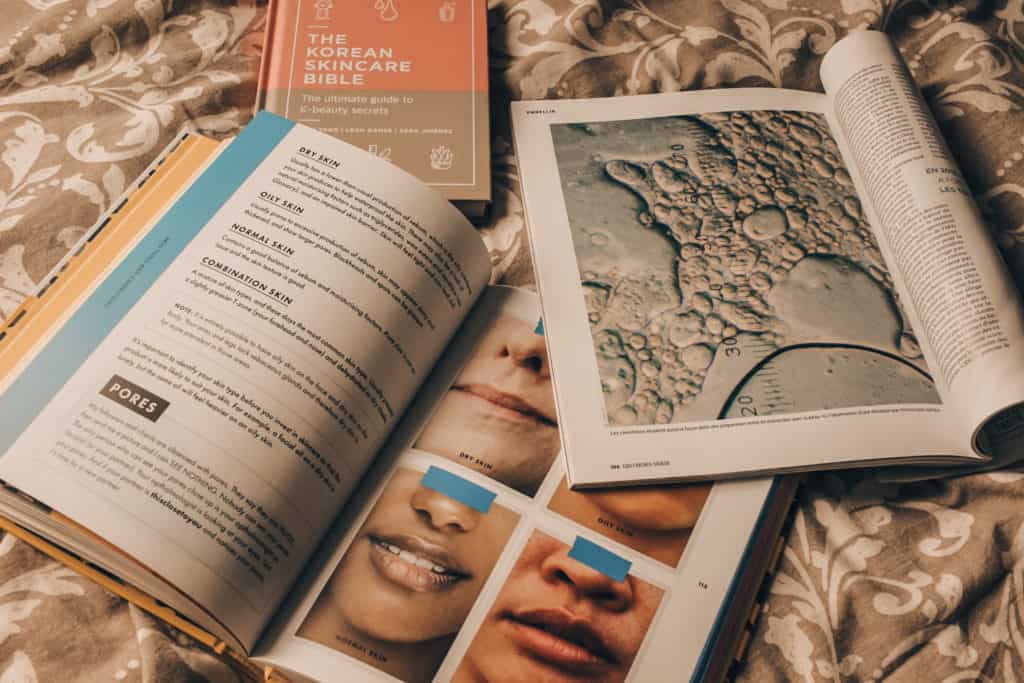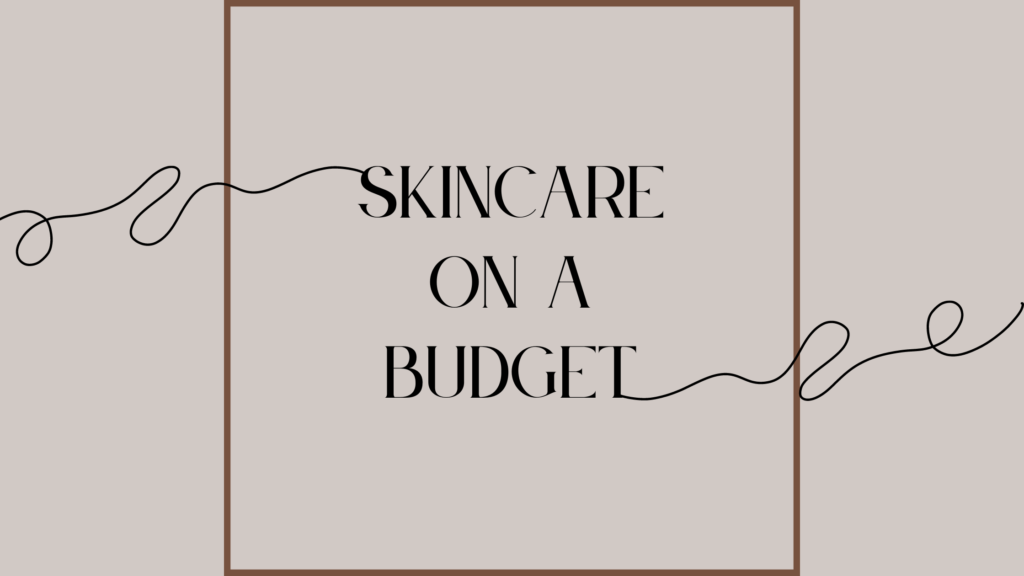How to find your skin type? probably vaguely heard of the different skin types so often promoted in magazines, blogs or on the social media platforms. It is an ever vague and elusive description of our skin. Some types are easier to determine than others, such as dry or sensitive, while the combination type does not have an all agreed-upon definition. The debate is that it should be simply recognized as oily and end of discussion. And is sensitivity even a type?
Lets explore how to find your skin type.
What it is a skin type and what it’s good for?
So, what is a skin type? – it is the type of skin and oil glands you are born with, it is a genetical thing. You can thank your parents for all the trouble.
Before investing in skincare, it is useful to know and understand your skin so that you invest in products that will work for you. But don’t be disappointed if a product promises to solve your problems and it doesn’t, it’s a learning curve.
The first three skin types are :
- Normal
- Oily
- Dry
Normal skin type – eh?
Normal is a bit of an out-there word. What is normal? Isn’t it ever-changing?
Well not for the skin. A normal skin type is characterized by balance. Balanced skin is one that doesn’t overproduce or underproduce oils. It doesn’t experience sensitivity nor tightness nor is it prone to blemishes. Dreamy isn’t it? Those sneaky little b***ards born with perfect skin.
Oily skin type – shinig like a thousand suns
How to find an oily skin type?Easy. As the name suggests, the oily skin type overproduces sebum, aka oils. You look as shiny as a grease ball. This type of skin is often prone to blemishes as excess sebum can clog the pores.
There are products out there that can control the sebum production, however, please don’t overly wash, and scrub your face as it will cause irritation and probably more oil because you’re stressing the skin. Embrace your skin and work with it rather than against it.
We have now gone past the time when matte was the norm, nowadays a little bit of healthy glow is more than welcome. Choose products that help regulate sebum production rather than cover it.
Tip: An easy way to know if you have oily skin is that you wake up an oily mess.
Dry skin type – is that a map of the desert ?
As opposed to the oily type, dry skin underproduces sebum, which means it’s lacking oils. Dry skin appears dull, tight, it can also be rough, scaly, and blotchy. It simply lacks natural moisturizing factors and it can also have an impaired skin barrier (which is the barrier that prevents moisture loss). What the skin needs are emollients – squalene, ceramides, anything that helps retain the moisture. Oils are a great choice.
Tip: dehydrated skin lacks water, while dry skin lacks oils that retain the water in the skin.
Skin types that haven’t found a definition :
- Combination
- Sensitive
Combination – aka all of the above
As previously mentioned, there is no universal definition of combination skin. It is often described as a “combination” of the other skin types. Even more often it is defined as “an oily t zone and dry cheeks”. Many people identify with this type of skin, I included, however, I’m starting to have an existential crisis and I think I misdiagnosed myself. Nowadays I opt to say I have oily skin.
It is entirely possible to use different products on different areas of the face to address different concerns, so don’t feel limited in your choices. You can easily use a niacinamide serum on the t-zone to control sebum production and oil on the cheeks to prevent dryness.
Sensitive – a skin type or condition?
Sensitive is at the ridge between a temporary skin condition and a skin type. A type is something that we’re born with so that would mean that the sensitivity can be worked with but not entirely changed. However, if it’s a skin condition it can be treated by lifestyle changes.
Sensitive skin is easily irritated by external factors such as product ingredients or sun exposure, appears to be blotchy and red and often – dry. It’s important to observe and identify what causes the sensitivity. Common sensitizing ingredients can be plant extracts and fragrance ( yep, all-natural doesn’t mean better).

Bottom line…
Skin is an ever-changing organ that is influenced by the external conditions, such as weather, environment, climate, but also internal, such as hormonal changes, ageing, overall health, and sometimes – diets. Yes sometimes. The relationship between skin and diet is not researched enough, for example, “chocolate causes acne” is a myth, that I have personally believed for a long time. I have a dairy-free diet; however, I haven’t observed any type of influence on my acne ever since I started this diet one year ago, it’s all hell loose as ever. But my bowels are happy.
There are also many accounts of people changing climate zones and experiencing a sudden change in their skin. For example, my skin was perfect in Japan, which is the primary reason I want to move there.
In conclusion: you may start with oily skin and end up with dry. But don’t feel discouraged, with trial and error we are bound to find what works for us. Listen to your skin and finding your skin type will become easy.
Bonus: How to find your skin type? Wash your face as per usual and wait for an hour. Are you shiny in the t-zone? Combination. Are you shiny all over? Oily. Does your sin feel tight? Dry.
Next week we’ll cover the basics on how to build a routine!
Don’t forget to follow me on Instagram for more product reviews, useful tips, as well as snippets of my daily life.

Some of the links listed above are affiliate links, meaning that if you click through and decide to make a purchase, at no additional cost to you, I may earn a commission.




Green Tea in Skincare - the amazing benefits - Glowing Damsel
17/09/2020 at 4:08 PM[…] The Skincare Basics: How to find your skin type […]
Keto diet and acne - sharing my results - Glowing Damsel
28/09/2020 at 1:41 PM[…] The Skincare Basics: How to find your skin type […]
Know the difference: Humectants and Emollients - Glowing Damsel
05/10/2020 at 4:44 PM[…] The Skincare Basics: How to find your skin type […]
It's Time to Stop Believing These 6 Skincare Myths -
29/10/2020 at 1:58 PM[…] You genes cause oily skin. […]
Beauty Products that are a Waste of Money -
02/11/2020 at 1:40 PM[…] sunscreen is very hyped up. It is light and “airy” and many love it for that. As an oily skin type, I saw this as a perfect product that could work with my […]
This is How Long It Takes for Skincare to Work - Glowing Damsel
16/11/2020 at 1:53 PM[…] With the increasing interest in retinol to treat acne and hyperpigmentation, it is expected that people are impatient to see results. Myself included. But it’s not that easy. You see, it all depends on how frequently you use retinol. And this frequency depends on your skin type. […]
Ingredient Spotlight - What Is Hyaluronic Acid and How Do I Use It | Glowing Damsel
20/04/2021 at 1:59 PM[…] Furthermore everyone, and I mean everyone, can benefit from this ingredient. No matter your skin type or skin […]